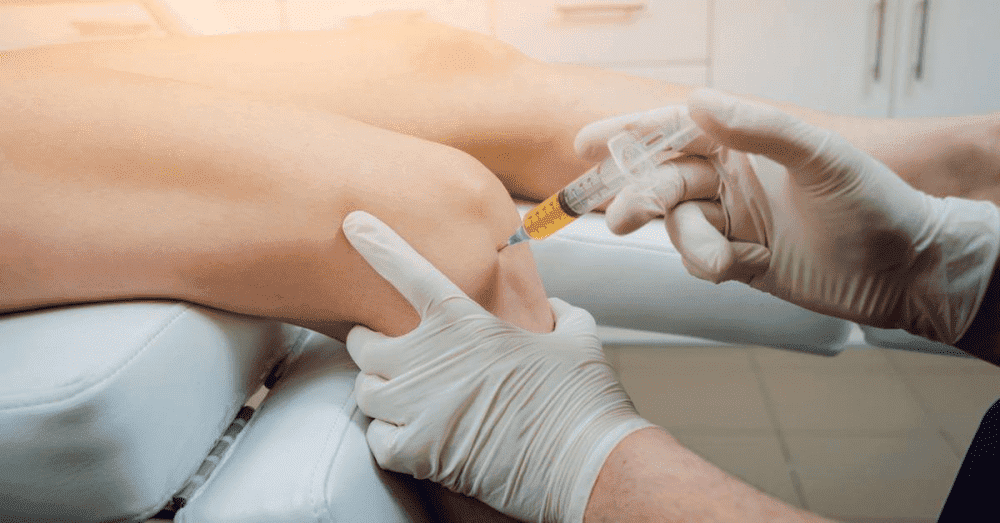The journey to rejuvenation doesn’t end as you leave the clinic after a Platelet-Rich Plasma (PRP) session; in fact, a new phase begins. It unfolds with each careful step taken in adherence to post-procedural care, a crucial element often carrying equal, if not more, weight than the post PRP treatment itself.
This important phase is characterized by personalized approaches tailored to optimize the benefits of PRP, ensuring that every individual not only navigates through the recovery seamlessly but also ensures the maximum benefits from this advanced treatment. The fusion of expert insights and tailored aftercare strategies is essential in translating the scientific precision of PRP into optimal, and lasting results.
How much time does it take to recover from PRP?
The recovery time from PRP (Platelet-Rich Plasma) treatment can vary depending on the individual and the specific area being treated. Generally, most patients experience some level of redness, swelling, or bruising that can last from a few hours to a couple of days. Here are generalized timelines for different types of PRP treatments:
PRP for Hair Loss
- Immediate Aftermath: Mild pain or discomfort, redness at the injection sites.
- 2-3 Days Post-Treatment: Redness and sensitivity begin to subside.
- 1 Week: Most visible side effects have typically resolved, and normal activities can be resumed.
PRP for Skin Rejuvenation
- Immediate Aftermath: Possible redness, swelling, or bruising akin to a sunburn.
- 24-72 Hours: The majority of these symptoms generally dissipate.
- 1-2 Weeks: Noticeable improvements in skin texture and tone begin to emerge.
Care for First 48 Hours after PRP
The initial two days post-PRP are pivotal. Your body is a canvas of cellular activity, with the injected platelets working their magic. Avoiding intense physical activity is the golden rule during this period. It’s not about taking to the bed, but rather about giving your body the space to breathe and regenerate without the additional stress of rigorous movement.
You might notice some swelling or bruising; that’s your body’s natural response. It’s like a silent applause, a sign of the kickstart of the healing process. Cold compresses can be your best companion to soothe these temporary, yet sometimes uncomfortable, visual markers of recovery.
Take Nutrients
Now, let’s talk about your diet because, in the wake of PRP, it is not just about what you apply externally but what you consume. Anti-inflammatory foods are recommended. Think of foods rich in antioxidants, like berries, nuts, and leafy greens. These are not just food items; consider them as essential fuel that propels the healing journey forward, making every cellular response more robust and more efficient.
Hydration is also very crucial at this stage. Imagine your cells are like sponge balls, soaking up every ounce of water, becoming plumper, more alive. Water is not just a component; it is a catalyst that accelerates healing, making every cellular activity more seamless, every nutrient absorption more efficient.
Avoid Sun Exposure
Sun exposure post-PRP is like stepping into a battlefield unarmored. The treated skin is sensitive, a plain canvas that’s both vulnerable yet full of potential. Sunscreens are not just optional; they are non-negotiable. It is not just about the SPF but also about reapplication. It’s a layer of defense that stands between the delicate dance of cellular activity underneath your skin and the harsh, often unforgiving UV rays.
Careful Usage of Skincare Products
In the post-PRP chapter, every skincare product is not your friend. It’s about choosing allies that complement the healing journey. Avoid harsh chemicals, be wary of intense exfoliants, and embrace the world of natural, soothing ingredients. Remember, your skin is not just an external boundary; post-PRP, it’s a world of intense cellular activity, a universe where every application can either be a support or a hurdle.
Follow-up Appointments
Follow-up appointments are integral to the post-PRP care process, offering an opportunity for professionals to assess the healing and effectiveness of the treatment. These scheduled visits allow for a thorough examination of the treated areas, ensuring that the recovery is progressing as anticipated. Any concerns or unexpected reactions can be addressed promptly, ensuring patient safety and comfort.
These sessions provide a platform for patients to voice their questions or concerns, receiving personalized advice. The ongoing assessment ensures that aftercare is tailored to individual responses, optimizing the benefits of PRP treatment. In essence, follow-up appointments bridge the gap between initial treatment and long-term results, ensuring a guided and monitored healing journey.
Long-Term Care Strategies
Long-term care strategies post-PRP treatment are essential to sustaining and enhancing the obtained results. These include maintenance treatments that may be necessary to reinforce the initial PRP outcomes. Incorporating specific lifestyle changes, such as a balanced diet and adequate skin protection, play a pivotal role in supporting the treatment’s longevity.
Tailored skincare routine and avoiding harmful environmental exposures ensure that the benefits of the PRP are not only maintained but are also optimized over time. It is a continuous journey of care that enhances the rejuvenating effects of the PRP procedure.
